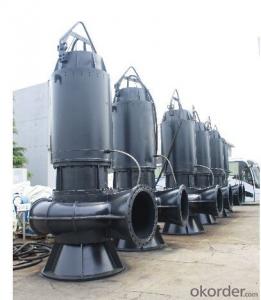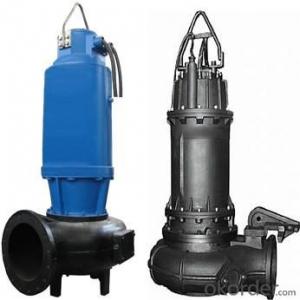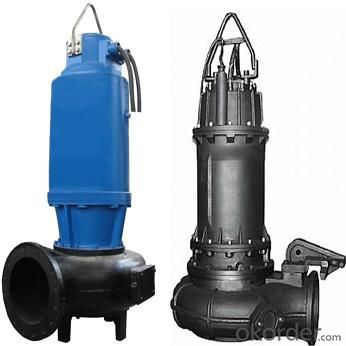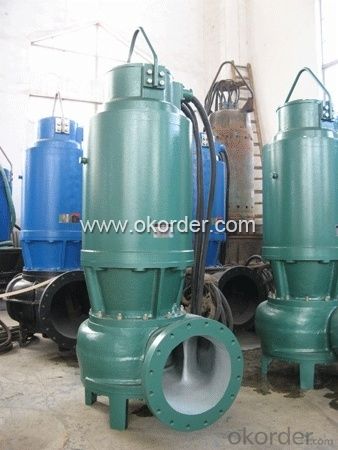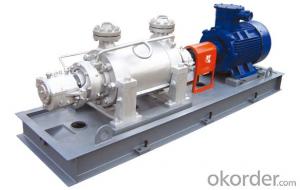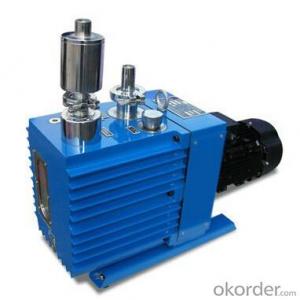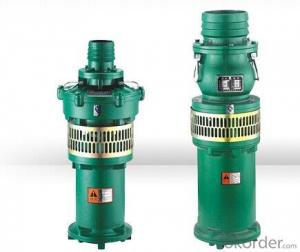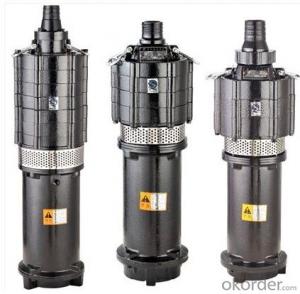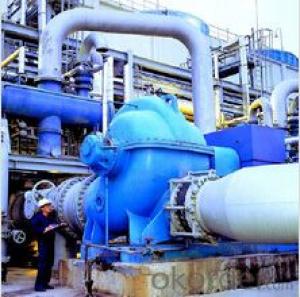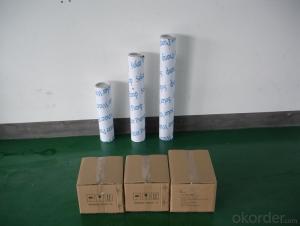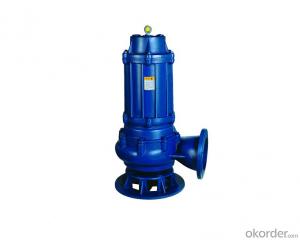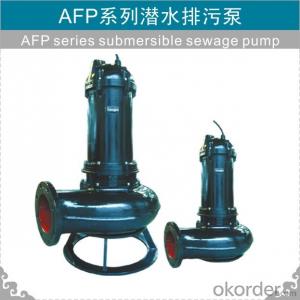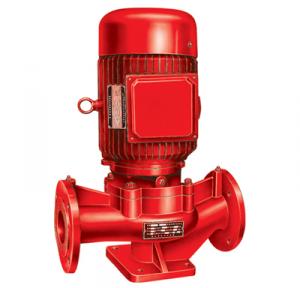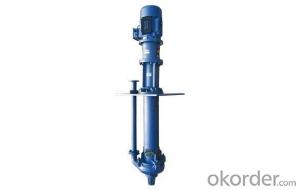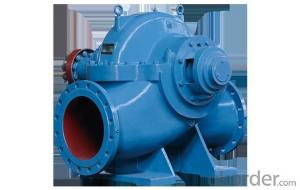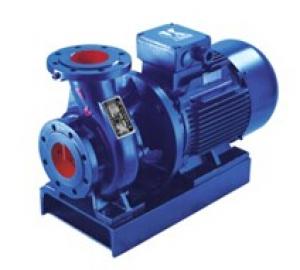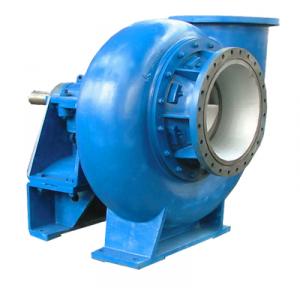WQ Series Vertical Sewage Submersible Pumps
- Loading Port:
- Shanghai
- Payment Terms:
- TT OR LC
- Min Order Qty:
- 1 unit
- Supply Capability:
- 2000 unit/month
OKorder Service Pledge
OKorder Financial Service
You Might Also Like
Product Description:
All details for WQ Series Sewage Submersible Pump:
1. Product Introduction of WQ series Sewage Submersible Pump
WQ series submersible sewage pump is mainly used for municipal work, industrial building, hotels, hospitals, civil air defense, mines, etc. It can be widely used in transfer waste water, rainwater and living water etc. which contains solid grains and various long fibers CNBM WQ series sewage submersible pump have many advantages, such as, hi-efficiency, circumvolution proof, blockage free, auto-coupling, hi-reliability and auto-control, etc.
2. Technical Performance of WQ series Sewage Submersible Pump
Discharge diameter: 50~600 mm
Capacity: 10~8000m³/h
Head: 5~60m
Power: 1.5~315kw
Diameter of pass solids: 20~145mm
3. Operation Condition of WQ Series Sewage Submersible Pump
1). Rated Voltage: 380V(660V), Frequency: 50Hz, 3-phase AC.
2). Temperature of medium under 40ºC.
3). PH value: 4~10.
4). Volume ratio of solid in medium below 2%.
5). Density of medium should be lower than 12000kg/m³.
4. Structure Characteristic of WQ Series Sewage Submersible Pump
WQ series submersible sewage pump is equipped with status indicator and protection device to ensure for pump safe and reliable operating.
1). The unique cable airproof is adopted, avoid leakage of cable.
2). Heat protector in stator assure of operating life of the motor.
3). The pump adopts outer recycling cooling design with motor power more than 18.5kw, which can keep the pump operating safely under the lowest water level.
4). A floating switch is installed at the bottom of motor chamber to protect the mechanical seal in the motor side.
5). The oil-water probe is installed at the up end of the oil chamber between pump and motor that can protect the mechanical seal in the side. If leakage occurs, the system will signalize and start protection.
6). Adopt perfect mechanical seal, the sealing material adopt tungsten carbide, silicon carbide and hard metal alloy, which can prevent the water from entering into the motor, and keep the operating reliable and safety.
7). The auxiliary impeller can balance the pressure outside of the mechanical seal, prevent the water entering into the oil chamber and prolong the life of the motor.
8). Unique impeller design, wide passage allow large solid and long fiber passing through freely, it features non-clog, convolve-proof and good passing ability.
9). The changeable wearing ring is installed between the impeller and the volute to keep the optimum operation conditions.
5. Impeller Design Characteristics of WQ Series Sewage Submersible Pump
For the feculence pass freely, it must be widen the flowing passage of impeller, for the big pump, can used for double-vane, or three-vane, for the small pump, it used for single(double) flowing passage, like a bent pipe has same section, it has a good passing characteristic, avoid stop, convolve caused by slowing current possibly. The especially flowing passage of impeller, cooperate with logical volute, made the paper, soft goods, garbage bag and other material in sewage can passing freely and the pump have no vibration in the course of running-in and load through the impeller balance between dynamic and static state.
6. FAQ
(1)Can your pumps mount Eff.1 motors
Currently, only on request though this will shortly be a CNBM standard.
(2)Are your pumps protected against dry running?
No, unprotected centrifugal pumps are not generally designed for dry running. It is important to give us or your dealer as much information as possible about the system in which the pump is used. Inlet pressure, the type of liquid to be pumped, together with relative density, viscosity and temperature, for example, are required in order to allow CNBM to recommend the right pump with the right gaskets for a long operating lifetime.
(3)How can I get trained on CNBM products?
Yes, we provide training courses in our factory (products, general and specific pump technology, hydraulics, and practical applications). Please consult your sales manager or get in touch with our headquarters for more information.
(4)Are your pumps acid-proofed?
To choose the right pumps for chemical applications, we do need further details on hydraulic operations as well as on the type, concentration and temperature of the liquid.
(5)Can your pumps mount Eff.1 motors
Currently, only on request though this will shortly be a CNBM standard.
(6)Are your pumps protected against dry running?
No, unprotected centrifugal pumps are not generally designed for dry running. It is important to give us or your dealer as much information as possible about the system in which the pump is used. Inlet pressure, the type of liquid to be pumped, together with relative density, viscosity and temperature, for example, are required in order to allow CNBM to recommend the right pump with the right gaskets for a long operating lifetime.
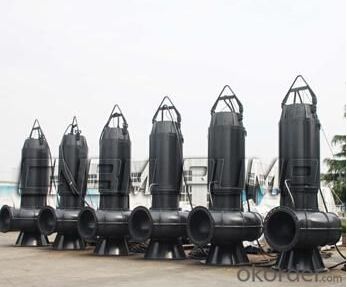
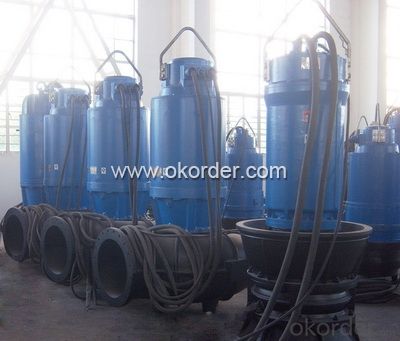
- Q: What is the difference between swashplate pump and crankshaft pump?
- Piston pump: valve plate, valve plate, piston, piston ring, crankshaft, connecting rod and so on, all belong to its spare parts.Piston pump working principle: by the piston in the pump cylinder for reciprocating movement to suction and remove liquid.
- Q: If the suction pump does not have enough suction range, you need to add a vacuum pump to increase the suction stroke. How do you install the suction pipe of the vacuum pump? Water pump impeller is not closed, it is normal that the vacuum pump is unable to pump suction pipe to a vacuum, is it because the water pump outlet pipe connected to the role of the check valve? But the water pump, outlet pipe, check valve sealing performance can achieve the function of non leakage?
- Vacuum suction principle of self suction pump:Assuming that the pump connected with the water inlet of a sealed container, the container has plenty of water, since the start of a water pump, water is thrown out of the water impeller pump body, water inlet seal vessel due to the extraction of water to form a vacuum cavity, this assumption will be connected to vacuum cavity and exposed to atmospheric conditions of water, water at atmospheric pressure under the effect of entry into the vacuum chamber".
- Q: What does the pump mortar do?
- 1: 2 cement mortar or cement mortar with the same proportion of other components except coarse aggregate in the concrete, the pump piston and the inner wall of the pipeline are fully lubricated, and a layer of lubricating film is formed
- Q: What's the pump? Where can I use it?
- Working principleIt transfers mechanical energy or other external energy of the prime mover to the liquid, increasing the energy of the liquid. Before the pump starts, the pump shell is filled with the liquid to be transported; after starting, the impeller is driven by the shaft to rotate at high speed, and the liquid between the blades must also rotate. Under the influence of centrifugal force, the liquid is thrown from the center of the impeller to the outer edge and obtains energy, and leaves the outer edge of the impeller at high speed to enter the volute pump shell. In the spiral case, the liquid slows down due to the gradual enlargement of the flow passage, and the part of kinetic energy is converted to static pressure, and finally flows into the exhaust pipe at higher pressure and is sent to the required place. When the liquid flows from the center of the impeller to the outer edge, a vacuum is formed at the center of the impeller. As the pressure at the upper level of the tank is greater than the pressure at the pump inlet, the liquid is continuously pressed into the impeller. Visible, as long as the impeller continues to rotate, the liquid will continue to be inhaled and discharged.
- Q: What is the relationship between the minimum suction vacuum of a pump and the required cavitation?
- When the pump is working, the liquid at the inlet of the impeller, due to a certain vacuum pressure will produce steam, the vaporization of the bubble in liquid particles under the impact of movement, the impeller and other metal surface erosion, thereby damaging the impeller and other metal
- Q: I would like to ask, constant pressure pump set pressure 20Mpa, the actual load is 15Mpa, then the constant pressure pump outlet pressure? If it is 20Mpa, then where is the loss of 5Mpa? If 15Mpa, the constant pressure pump 20Mpa how to understand? In addition, the constant pressure pump pressure is defined when the flow began to reduce the point, or a sharp drop in flow after the point?
- Constant pressure pump is pressure maintained at the set pressure, flow control valve according to the order, there is pressure to set, after the pump displacement is reduced, as for how to reduce emissions, to see how much you need to flow.
- Q: How is the pump level of submersible sewage pump determined?
- Below the top elevation of the sump, 200 is the warning water levelBut note: 1, the effective volume of the sump meets the requirements. 2, the pump should have enough submerged water level
- Q: Centrifugal pump flow, why can be adjusted through the outlet valve? Can the flow of the reciprocating pump be adjusted in the same way?. Why
- Centrifugal pump, and is a very common method of centrifugal pump, flow with the head (or pressure) increases, off a small valve resistance increases, the pump head should be increased, then the flow decreased, whereas open valve flow increase
- Q: What's the difference between a concrete pump and a concrete pump truck?
- Concrete pump is a pumping machine used in the field, while the concrete pump truck is a truck mounted pump.
- Q: How to calculate the motor power of metering pump?
- The total mechanical power and hydraulic power, divided by the overall efficiency of pump, and the pump head and the utilization rate of pump mechanical efficiency, and then multiplied by 1.1 times (API675), you can get a metering pump motor need more power.
Send your message to us
WQ Series Vertical Sewage Submersible Pumps
- Loading Port:
- Shanghai
- Payment Terms:
- TT OR LC
- Min Order Qty:
- 1 unit
- Supply Capability:
- 2000 unit/month
OKorder Service Pledge
OKorder Financial Service
Similar products
Hot products
Hot Searches
